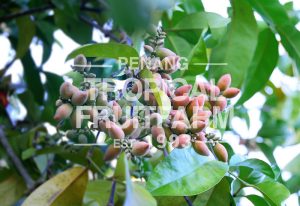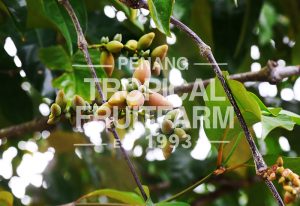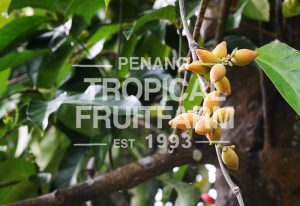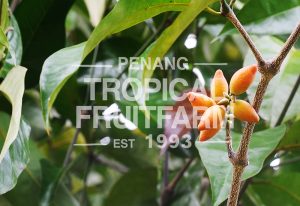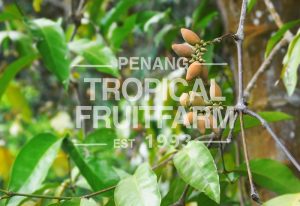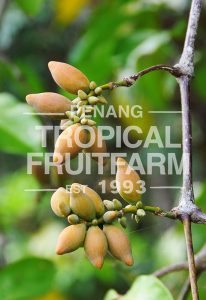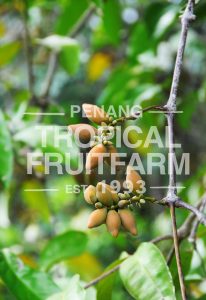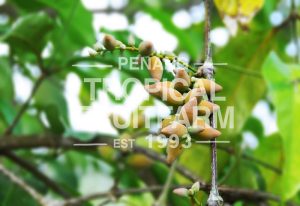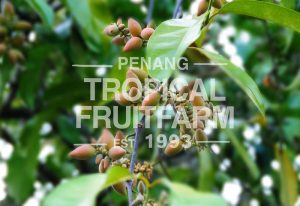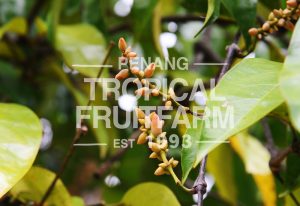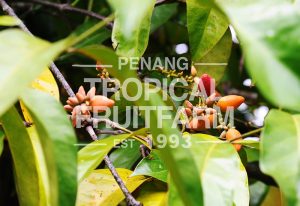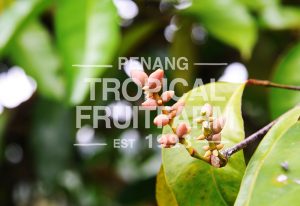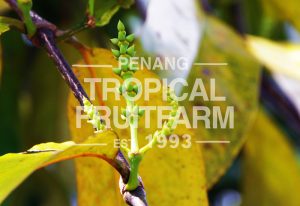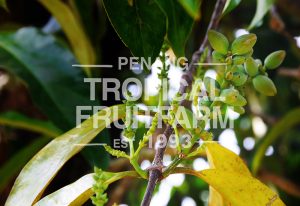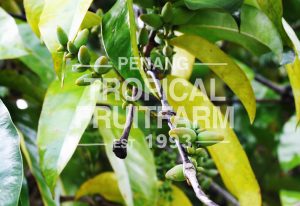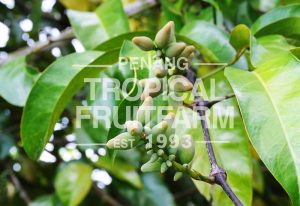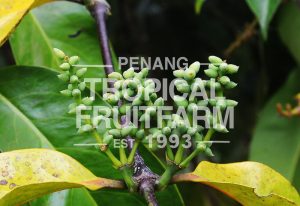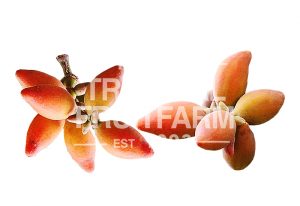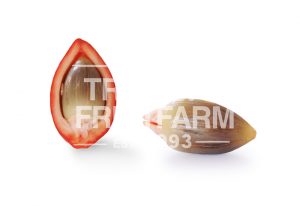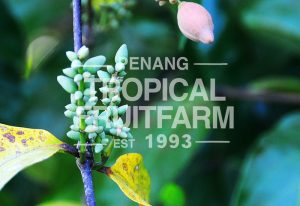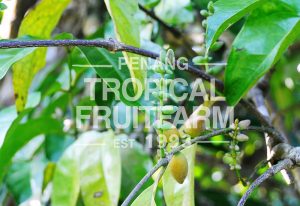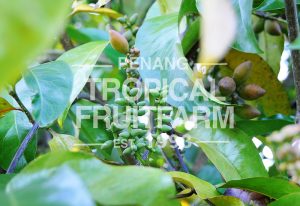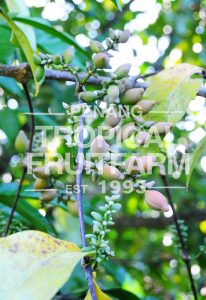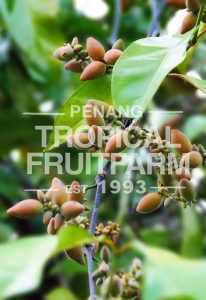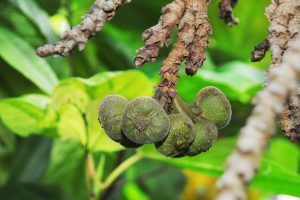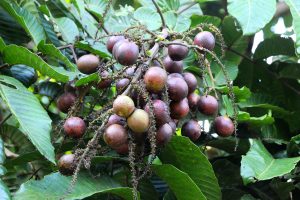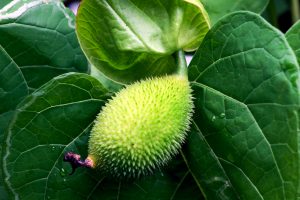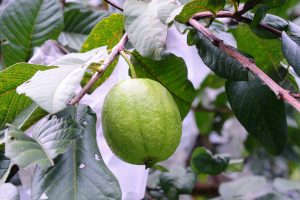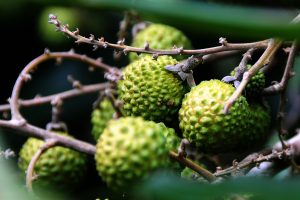| Origin | Gnetum nut is native to Southeast Asia and the Western Pacific Ocean Islands, from Mizoram and Assam in India, south and east through Indonesia and Malaysia to the Philippines and Fiji. |
| Description | Gnetum is a small to medium size tree that reaches 10-15m (33-50ft) in height and attains a trunk diameter of up to 40cm (16in). Branches are noticeably swollen at the base. |
| Growth Habitat | The gnetum nut tree occurs in moderately dry to humid tropical forest to lower montane forests from near sea-level to 1,700m elevation. It is usually found near river and stream banks in both its natural habitat and cultivated situations and lowland rainforests. It thrives in areas with mean annual rainfall of 3,000 to 5,000mm distributed uniformly throughout the year or seasonally and mean annual temperatures 22-30 degrees Celcius. |
| Foliage | It has evergreen, opposite leaves that are 10-20cm long and, when mature, turn glossy dark green. Leaf shape is elliptic, lanceolate, and ovate oblong. |
| Flowers | The species is dioecious, having male and female reproductive organs on separate plants, but not completely so. Gnetum nut does not have flowers. Instead, the species has cones or strobili (singular, strobilus). |
| Fruits | The fruit-like strobilus consist of little but skin and a large nut-like seed 2-4cm long inside. Fleshly strobili weigh about 5.5g, the seed alone 3.8g. Fruits are yellow, turning purple-red or orange-red with maturity, and ovoid, 1–3.5cm in length. |
| Harvest | The leaves are harvested when they are almost fully expanded but are still soft and succulent. The fruits are harvested when the skin turns red. |
| Soil | It prefers well drained and moist soil generally slightly acid to neutral soils but grows in light to heavy soils. The tree tolerates infertile and shallow soils. It can grow on soils high in clay or sand, and also on calcareous rocks. |
| Pruning | The tree regrows readily from pruning. Pruning can be used to control tree size, induce shoot flushing for harvest of leaf vegetable, or to improve tree shape. Since the branches tend to break easily, it is common practice in harvesting the fruits or the young leaves to simply cut the desired branches. |
| Fertilization | The tree has a mycorrhizal association that makes phosphorous and some micronutrients more readily available. Young seedlings respond positively to phosphorous. |
| Propagation | Gnetum nut may be propagated sexually by seed or asexually by airlayering. Airlayering or marcotting is the preferred method of propagating because the airlayers eventually grow into much shorter and more compact trees, and they produce fruits two to three years after planting. Furthermore, production of only superior female trees is assured. |
| Nutritional Properties | Gnetum nut are known to have a high protein concentration. Seeing as they are a rich source of proteins, the plants are also quite rich in antioxidants. |
| Health Benefits | Gnetum plants help prevent and fight against various health problems: hypertension, high cholesterol, or premature aging. You can also get some health benefits by adding parts of Gnetum plants to your food. The plant can help with various eye diseases, as well with anemia. Traditionally, Gnetum plants were mixed with other ingredients in order to treat dog bites. |
| Commercial Uses | Gnetum nut is widely used in Indonesian cuisine. The seeds are used for sayur asem (sour vegetable soup) and also, ground into flour and deep-fried as crackers (emping, a type of krupuk). The leaves are also commonly used for vegetables dishes. In Malaysia, the young leaves and shoots are used with seafood in coconut milk or used in spicy soup. The wood is used for tool handles and house beams. A high-quality fiber from the inner bark of the trunk and old branches can be extracted and made into ropes. The wood can be burned for firewood. |
| Food Suggestion | Emping Cookies Ingredients: 90g butter 60g icing sugar 1 egg yolk 100g plain flour Pinch of salt 50g fried melinjo crackers, crushed Some egg yolk for glaze Method: - Preheat oven at 180C - Cream butter and sugar until fluffy. - Add egg yolk, mix well. - Add flour and salt, mix well. - Add melinjo crackers, mix well. - Make into small balls and press the top with fork. - Arrange on a greased tray and glaze the surface with egg yolk - Bake for about 20 minutes. - Remove from oven and cool on a wire rack. |

